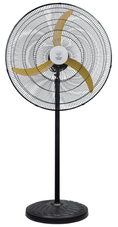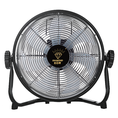In October 2009, James Dyson’s consumer electronics company,introduced a bladeless fan called Dyson Air Multiplier.
However, documents at the Intellectual Property Office, formerly the Patent Office, indicate that Dyson re-submitted its application for a worldwide patent last year after the IPO ruled that its initial design was too similar to the Japanese invention. The Dyson version, “cannot be considered novel or cannot be considered to involve an inventive step”, the initial ruling from the IPO suggested.
Patents expire after 20 years, but even after that date they can not be submitted by a different person or company unless they have been changed or improved upon.
Dyson’s most recent patent applications, which are still pending, have been changed to highlight a key design feature of the Air Multiplier: a Coanda surface. This is the aerofoil ramp over which the air is pushed out of the ring of the fan. Because of the angle of the Coanda surface, the air sucks in surrounding air into the air flow, creating a smooth and powerful blast of air for any office worker using the fan.
Gill Smith, the head of Dyson’s patent department, said: “We wouldn’t dream of denying that the Japanese arrangement and our fan look very similar. The difference is all in the technology. We’ve spent many years developing the Coanda surface. The Japanese version does not have this feature.”
She said that she “absolutely expected” Dyson to be granted a patent for its Air Multiplier. The most recent patent application has not fallen into the “not novel” category that the initial application suffered from.
















